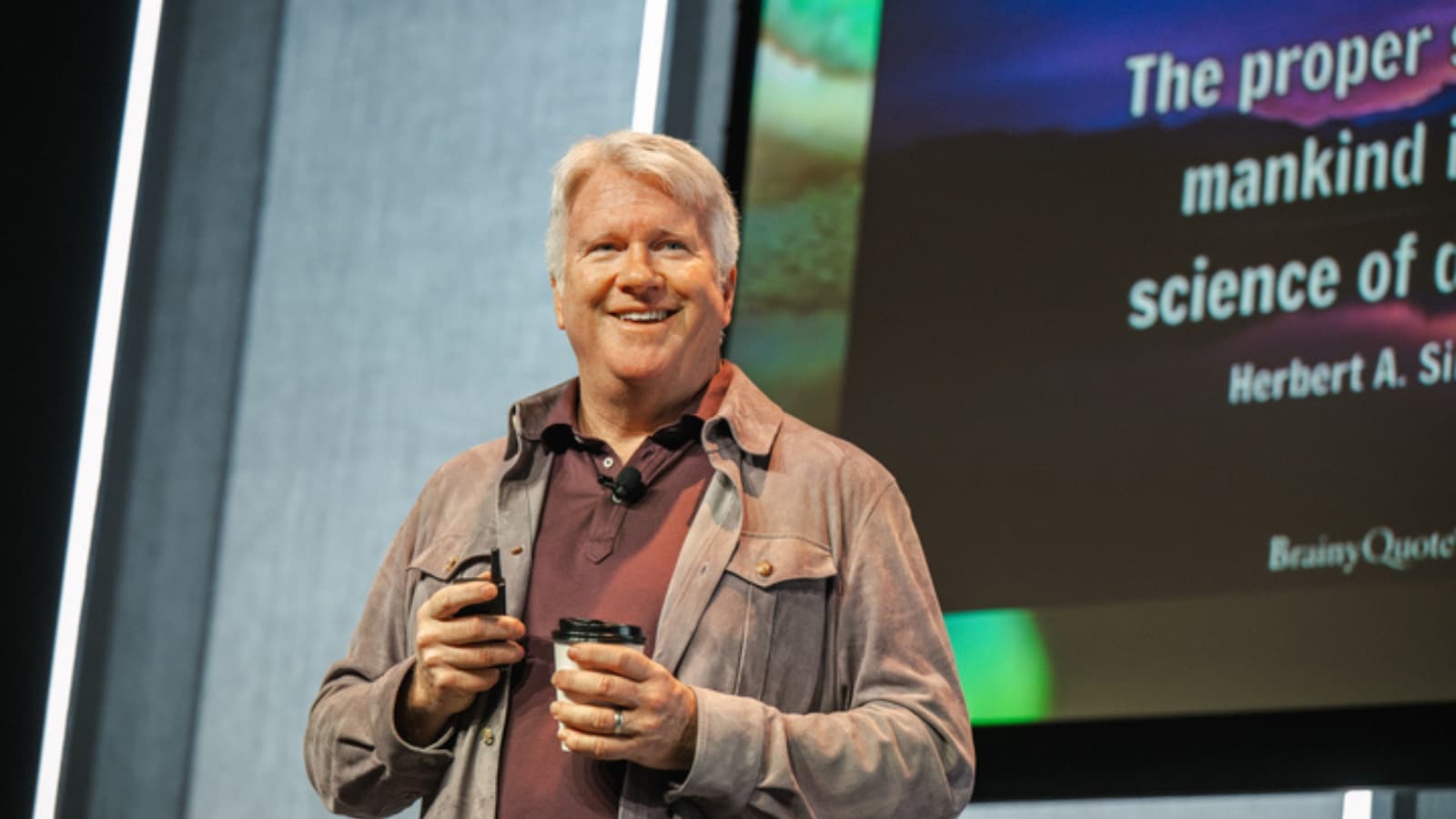Blog
Why We Do What We Do: A CEO’s Take on Purpose, Design, and Real Impact
PUBLISHED ON:
July 30, 2025

Subscribe to Receive the Latest Supply Chain Design Resources
At this year’s annual OptiCon user conference, Optilogic CEO Don Hicks delivered a candid and compelling keynote that made one thing clear: in today’s rapidly evolving supply chain landscape, design and meaningful work matter more than ever.
Here’s a glimpse at the “why” behind Optilogic’s work and the “what’s next” in supply chain design.
The Heart of Optilogic: People, Purpose, and Problem Solving
Opening with a powerful reminder, Don underscored why Optilogic exists: to create a real, tangible impact.
“We’re not faking it when we say we love problem-solving. We really mean it.”
He challenged the audience to rethink what’s truly driving their careers — time vs. money, stability vs. purpose — and why meaningful work should matter more than just a paycheck.
“Are we accepting things the way they are, or should we push to make it better?”
Whether it’s life decisions or supply chain strategies, he explained, asking why is the first step towards making something better, and in that sense, you’re already thinking like a designer.
Three Stakeholders, One Mission
Optilogic operates on a balanced commitment to three core stakeholders: customers, employees, and investors.
To the customers who took a chance on a young company with a bold new product, Don expressed sincere gratitude.
“You took a risk to come work with us, and we take that really seriously. We want to pay that back, and we’re deeply honored you chose us.”
Close behind are the people who make it all possible – the Optilogic team. Don emphasized that creating a culture of internal service is essential to delivering exceptional service to customers. “We serve each other here. If we can’t take care of our team, we’re not going to be around to serve you well.”
Lastly, to the investors who back ambitious ideas and unconventional thinking, he offered appreciation saying, “We make sure they don’t regret that evening they wrote the check.”
This isn’t just customer obsession or shareholder capitalism. It’s stakeholder capitalism in action, where long-term value is built by honoring the trust of all three groups equally.
Culture is King
According to Don, strategy gets all the attention, but culture does the real heavy lifting: “Amateurs talk about strategy. Professionals talk about culture.”
Focusing on the core values that define Optilogic’s internal identity, he emphasized that companies with a strong culture debate ideas, not people. They reject misleading tactics, take ownership of mistakes, and generously share the credit. Most importantly, they hold themselves to an unwavering standard of integrity.
“If you’re doing something you’re not proud of, stop,” Don said. “You get one life. Why waste it doing stuff that doesn’t feel right?”
Design: The Invisible Superpower
Design isn’t a buzzword – it’s a way of seeing the world. Don encouraged attendees to look beyond the daily fires and recognize the bigger system at play. “The whole system has a design,” he explained. “Someone—maybe you—has to step back and see it.”
When done well, design unlocks alternatives and reveals real breakthroughs. “It’s sad when you run a model and only get 0.5% improvement,” he said. “But when you add new lanes or products, suddenly it’s 10% then 15%. That’s the power of design.”
Empowering Individuals, Enabling Teams, Optimizing Enterprises
Optilogic’s strategy supports transformation at every level of the organization.
It starts with empowering individuals — giving modelers tools they can run independently – then scales up by helping companies build capable design teams to spread insights across the business.
“We still serve an army of one, but you can’t rely on just one person. When you enable a team, you make design a business function. That’s where it becomes mission critical.”
At an enterprise level, Don shared how Optilogic is optimizing its system to help people across departments make smart decisions by using apps powered by the same tools designers use.
“What if a warehouse manager could tap into the same logic and power as a top modeler? That’s the goal. Spread the power across the whole org.”
Platform-First: The Power and Flexibility of Atlas
Optilogic’s foundation is Atlas, a powerful, cloud-native OR platform that scales across use cases.
“We didn’t set out to build a supply chain app,” Don admitted. “We built a coding platform. It just turned out to be the right solution all along.”
Not only is Atlas a platform for creating tailored apps, it’s providing the foundation for all sorts of other Optilogic innovations designed to make modeling faster, easier, and more impactful:
Supernova is Optilogic’s most powerful solver that is making it possible to run the world’s biggest supply chain models effortlessly, like at General Motors.
The Leapfrog AI assistant is speeding up workflows and will soon evolve into a team tool.
DataStar is Optilogic’s breakthrough data transformation and analytics product [to launch in Q4 2025] purpose-built for supply chain teams. DataStar aims to slash the dreaded 80% of modeling project time spent wrangling data.
Support Without Silos
Optilogic is adding more service departments — not to compete with consultants, but to better serve customer needs. New professional services can take on outsourced projects. An app development team will build your internal tools quickly and affordably. And a customer engagement team, staffed with industry vets, will help you plan strategy and get more out of the platform.
“This isn’t consulting,” Don clarified. “It supports our ecosystem. We want to be the platform everyone builds on.”
What We’re Up Against: Three Threats
Pivoting towards the future, Don warned about three major challenges ahead for the industry.
First, short-termism. While putting out daily fires is part of the job, he stressed the importance of staying proactive and keeping sight of the bigger picture. “Yes, you’re busy,” he said, “but don’t give up on long-term design. That’s where breakthroughs live.”
Second, cynical tech culture. Too many vendors flood the space with hype, half-truths, or gimmicks that create noise and erode trust. “Don’t fall for it. Hold us accountable—and hold them to the same standard.”
And finally, AI panic. He emphasized that while AI is powerful, it should be seen as a tool, not a replacement for thoughtful design. “AI maps inputs to outputs,” Don said. “But it can’t see the future if the past doesn’t reflect it. That’s why design still matters — and why your jobs are safe.”
One Final Metaphor: The Mountain
Wrapping up, he shared a personal story about climbing Kilimanjaro with his son last summer. When his son got altitude sickness, Don was torn between turning back and finishing the climb. His son told him, “You should finish it. For both of us.” Don did—and the experience became a metaphor for the design journey itself.
“You sign up for one reason,” he said, “then discover how hard it is, and only later figure out what it all meant. But the journey is worth it.”
Final Words
“You ought to be proud of everything you do. If you’re not, change it.”
That’s the message Don Hicks left with the audience; a challenge to do meaningful work and embrace design, and a reminder that real progress starts with asking the right question: “Why do we do what we do?”

